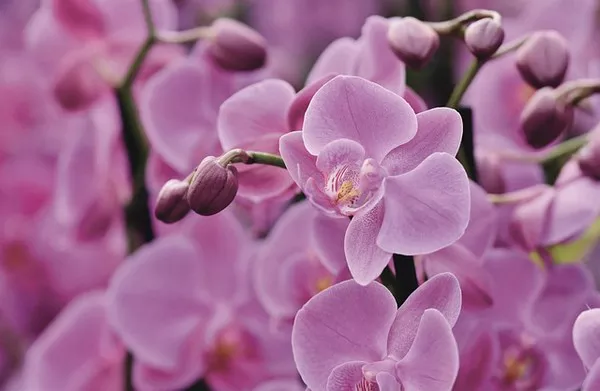Flowers have long been celebrated for their intricate beauty, delicate fragrances, and their ability to convey profound emotions and sentiments. Among the myriad of emotions they symbolize, one of the most cherished is peace. In various cultures, flowers have been used as powerful symbols to represent the elusive and cherished concept of peace. This article delves into the world of floriculture to explore the diverse flowers that represent peace, their cultural significance, and the timeless symbolism that continues to resonate across the globe.
The Universality of Peace
Peace is a concept that transcends geographical and cultural boundaries. It is a fundamental aspiration shared by people from all walks of life, irrespective of their backgrounds, beliefs, or experiences. The quest for peace, both on a personal and global scale, has driven humans throughout history to seek symbols that embody this universal yearning. Flowers, with their intrinsic connection to nature and the human experience, have emerged as one of the most powerful symbols of peace.
The Dove Orchid – A Symbol of Peace and Harmony
The Dove Orchid, scientifically known as Peristeria elata, is a rare and unique flower native to Central and South America. Its name is derived from the Latin word “peristerium,” which means “dovecote” or “dove’s nest.” This nomenclature reflects its striking resemblance to a dove in flight when viewed from a certain angle. The Dove Orchid is celebrated for its graceful, pure white petals and an elegant, central column that resembles a dove’s head.
In many cultures, doves symbolize peace and purity. They are frequently associated with divine messages of hope and reconciliation. The Dove Orchid’s likeness to a dove is seen as a profound representation of the peace and harmony sought by humanity. This flower serves as a reminder that, like the dove, we should strive to find common ground, avoid conflict, and work towards peaceful coexistence.
The White Lily – An Emblem of Purity and Peace
The White Lily, or Lilium candidum, is another well-known flower with deep ties to peace. It is admired for its radiant, pure white petals and its association with purity and innocence. Throughout history, the White Lily has been used in religious ceremonies, including Christianity, where it is often connected to the Virgin Mary as a symbol of her purity and grace.
In the language of flowers, also known as floriography, the White Lily conveys sentiments of peace, renewal, and harmony. Its gentle, timeless elegance has made it a favored choice for floral arrangements in various cultures, especially during moments of reconciliation and remembrance.
The White Poppy – A Symbol of Peace and Anti-War Movements
While the red poppy is traditionally associated with remembrance and sacrifice in honor of military veterans, the white poppy has emerged as a symbol of peace and anti-war movements. It is characterized by its pristine white petals and the absence of the iconic red center.
The white poppy was first introduced by the Women’s Co-operative Guild in the United Kingdom in 1933 as a symbol of peace, advocating for the end of all wars and the prevention of future conflicts. It serves as a reminder of the devastating consequences of war and the universal desire for a world free from violence. Wearing a white poppy is a way for individuals to express their commitment to promoting peace and working towards a more peaceful world.
The Olive Branch – A Time-Honored Symbol of Peace
The Olive Branch, though not a flower, is an ancient symbol of peace that deserves mention in any discussion on this topic. Olive branches are depicted in various forms of art, literature, and religious texts throughout history to represent peace and reconciliation. Their significance can be traced back to ancient Greece, where the olive tree was revered for its valuable fruit and the oil it produced.
In Greek mythology, the goddess Athena is said to have gifted the olive tree to the city of Athens as a symbol of peace and prosperity. Today, the olive branch is a universal emblem of peace and diplomacy, and it is often used in peace treaties and symbols of hope for peaceful coexistence.
Cherry Blossoms – A Symbol of Peace and Transience
Cherry blossoms, or sakura in Japanese, are celebrated for their ethereal beauty and the fleeting nature of their blooms. In Japan, these delicate pink and white flowers are a symbol of transience, renewal, and the ephemeral nature of life. The annual cherry blossom season, known as Hanami, draws people from all over the world to witness the breathtaking spectacle of these blossoms in full bloom.
The cherry blossom has come to represent a poignant form of peace. It serves as a reminder that life is precious but temporary, and the beauty and fragility of these blooms inspire a deep appreciation for the present moment. In this way, cherry blossoms encourage people to seek peace within themselves and foster a sense of gratitude for the world around them.
Conclusion
Flowers have a remarkable ability to convey complex emotions and ideas through their beauty, color, and fragrance. The universal desire for peace, a concept that transcends borders and cultures, finds resonance in the symbolism of various flowers. Whether through the graceful petals of the Dove Orchid, the pure white blooms of the White Lily, the anti-war sentiment of the White Poppy, the timeless representation of peace in the Olive Branch, or the poignant reminder of transience found in Cherry Blossoms, flowers continue to serve as powerful symbols of peace.
In a world where conflicts and divisions persist, the universal language of flowers provides a unifying thread, reminding us of our shared aspiration for peace and harmony. Through the cultivation and appreciation of these remarkable blooms, we are inspired to work towards a more peaceful and harmonious world, where the beauty of nature’s creations can serve as a constant reminder of our common humanity.


